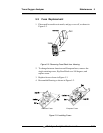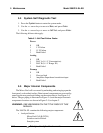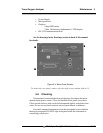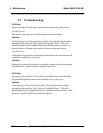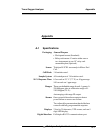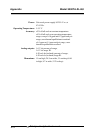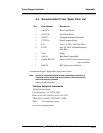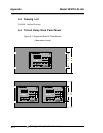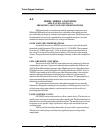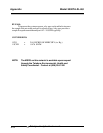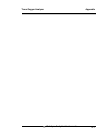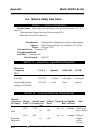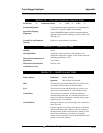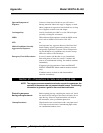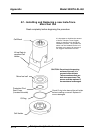
A-5
Trace Oxygen Analyzer Appendix
Teledyne Analytical Instruments
3000XL SERIES ANALYZERS
APPLICATION NOTES ON
PRESSURES AND FLOW RECOMMENDATIONS
3000 series analyzers require reasonably regulated sample pressures.
While the 3000 analyzers are not sensitive to variations of incoming pressure
(provided they are properly vented to atmospheric pressure) The pressure must
be maintained as to provide a useable flow rate trough the analyzer. Any line
attached to sample vent should be 1/4 or larger in diameter.
FLOW RATE RECOMMENDATIONS:
A usable flow rate for a 3000XL series analyzer is one which can be
measured on the flowmeter. This is basically 0.5 - 2.0 SLPM . The optimum
flow rate is 1 SLPM (mid scale). Note: response time is dependent on flow
rate, a low flow rate will result in slow response to O2 changes in the sample
stream. The span flow rate should be the approximately same as the sample flow
rate.
CELL PRESSURE CONCERNS:
The sensors used in 3000XL series analyzers are optimized to function
at atmospheric pressure. At pressures other than atmospheric the diffusion rate
of O2 will be different than optimum value. Higher pressures will produce faster
O2 diffusion rates resulting in higher O2 reading and shorter cell life. To use a
3000XL series analyzer at a cell pressure other than atmospheric, the analyzer
must be calibrated with a known calibration gas at the new cell pressure to
adjust for the different diffusion rate. Cell pressures below 2/3 atmospheric are
not recommended because they tend to cause excessive internal expansion
which may result in seal failure.
For operation at cell pressures other than atmospheric care must be
taken not to change the sample pressure rapidly or cell damage may occur. For
cell pressures above atmospheric, caution must be exercised to avoid over
pressuring the cell holder.
FLOW CONTROL VALVE:
All 3000XL series analyzers have a flow control device. This device is a
needle valve, and serves two functions in the sample path. The first function is to
limit the flow rate of the sample through the analyzer. The needle valve is chosen
to operate over a specific range of pressures and provide a useable flow rate
over that range.
The second function that the needle valve provides is a pressure drop.
This device is selected to provide the only significant pressure drop in the
sample path.
A-5



